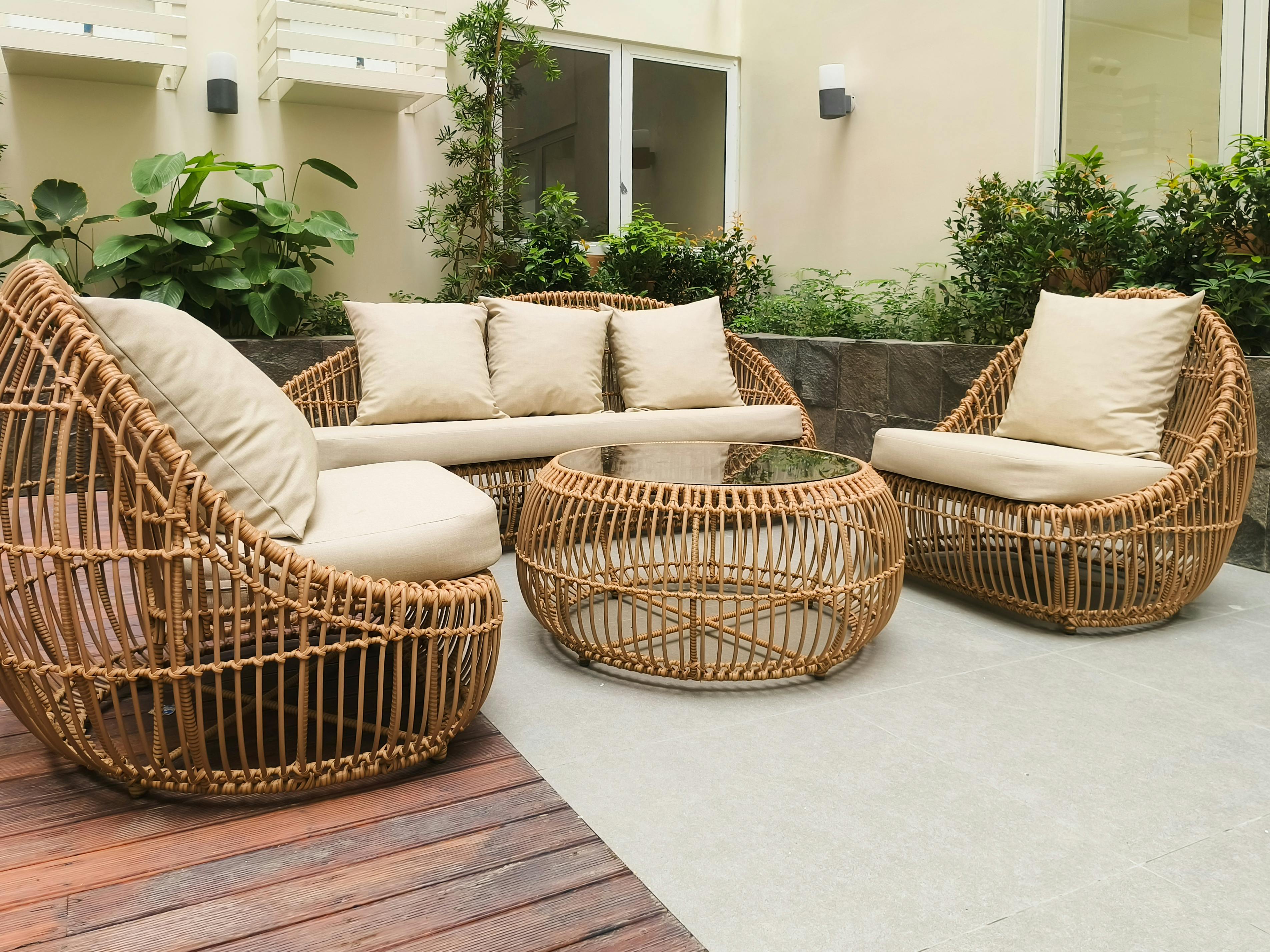
As winter fades and the first signs of spring emerge, it’s time to bring your outdoor furniture back to life. Months of rain, frost, and wind can leave garden sets looking a little worse for wear, but before you reach for chemical-heavy cleaners, why not opt for natural, eco-friendly solutions to maintain and restore your furniture while being kind to the environment. Whether your furniture is made of wood, metal, rattan, or plastic, there are plenty of sustainable ways to keep it looking great year after year.
Natural Cleaning Solutions Using Household Items
Wooden Furniture
Wooden outdoor furniture, needs regular maintenance to prevent cracking and fading. Instead of chemical-laden cleaners, try these at-home solutions:
- Vinegar and Olive Oil Polish: Mix one-part white vinegar with one part olive oil. Apply it with a soft cloth to clean and nourish the wood. Vinegar removes grime, while olive oil restores moisture.
- Lemon and Baking Soda Scrub: Mix lemon juice with baking soda to create a gentle abrasive paste for stubborn stains. Rinse thoroughly with water and let the furniture dry completely.
- Used Tea Bags for Stain Removal: Wipe wooden surfaces with cooled, brewed black tea to enhance natural wood tones and remove light stains.
Metal Furniture
Metal furniture, such as steel and aluminium sets, is prone to rust and dirt accumulation. Try these easy home remedies:
- Baking Soda and Water Paste: Apply the paste to rust spots, let it sit for 15 minutes, then scrub with a soft brush and rinse.
- White Vinegar Spray: Spray diluted white vinegar onto the metal to break down dirt and oxidation. Wipe clean with a microfibre cloth.
- Candle Wax for Rust Prevention: Rub an old candle over clean, dry metal surfaces to create a moisture barrier and prevent rust.
Rattan or Wicker Furniture
Rattan and wicker furniture, made from natural or synthetic fibres, require gentle cleaning. Try these homemade solutions:
- Warm Water and Castile Soap: Mix a few drops of castile soap in warm water and wipe the furniture with a soft cloth. Avoid over-saturating the material.
- Tea Tree Oil Spray: A few drops of tea tree oil mixed with water can prevent mould and mildew buildup.
- Dry Brush for Dust Removal: Use an old toothbrush or a soft-bristle brush to remove dust from tight spaces in the weave.
Plastic Furniture
Plastic garden chairs and tables are easy to maintain but can discolour over time.
- Lemon Juice and Salt Scrub: Sprinkle salt on a lemon half and use it to scrub away stains. Rinse with water.
- Hydrogen Peroxide Solution: For stubborn discolouration, mix hydrogen peroxide with water and let the furniture sit in the sun for natural bleaching. Always refer to the user manual for specific guidelines.
- Old T-Shirts for Polishing: Use soft, worn-out cotton T-shirts to buff and shine plastic surfaces without creating waste.
Sustainable Protection Methods Using Everyday Items
Once your furniture is clean, protect it using eco-friendly methods to extend its life.
- Beeswax or Linseed Oil for Wood: Instead of synthetic sealants, apply a thin coat of beeswax or boiled linseed oil to protect against moisture and UV rays.
- Carnauba Wax for Metal: A natural wax coating on metal furniture prevents rust without toxic chemicals.
- Shade and Storage: Keep furniture under a shaded area or store it indoors during extreme weather to reduce wear and tear naturally. Refer to the user manual for specific storage guidance.
- DIY Waterproofing Spray: Mix beeswax with coconut oil and apply it to wooden or fabric-covered furniture to repel water.
By using these eco-friendly cleaning and protection methods with items already in your home, you can maintain beautiful outdoor furniture while reducing waste and environmental impact. With a little creativity and care, your outdoor space will remain stylish and sustainable for years to come.